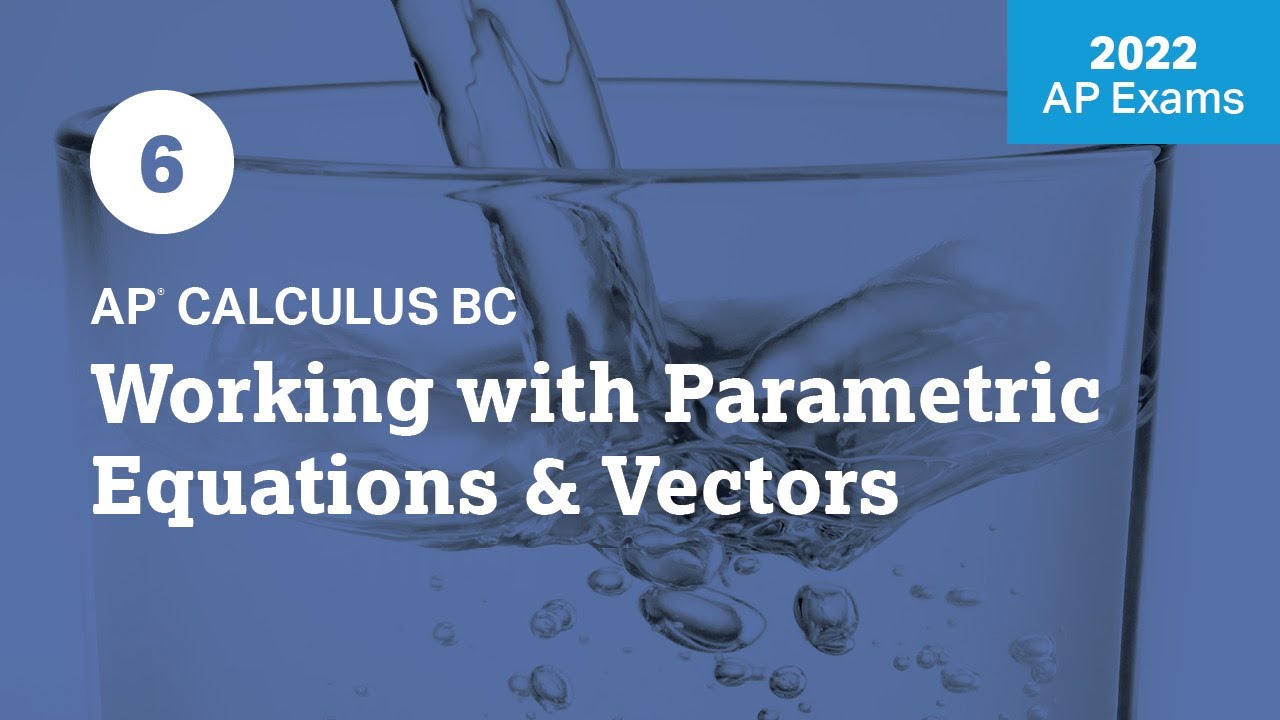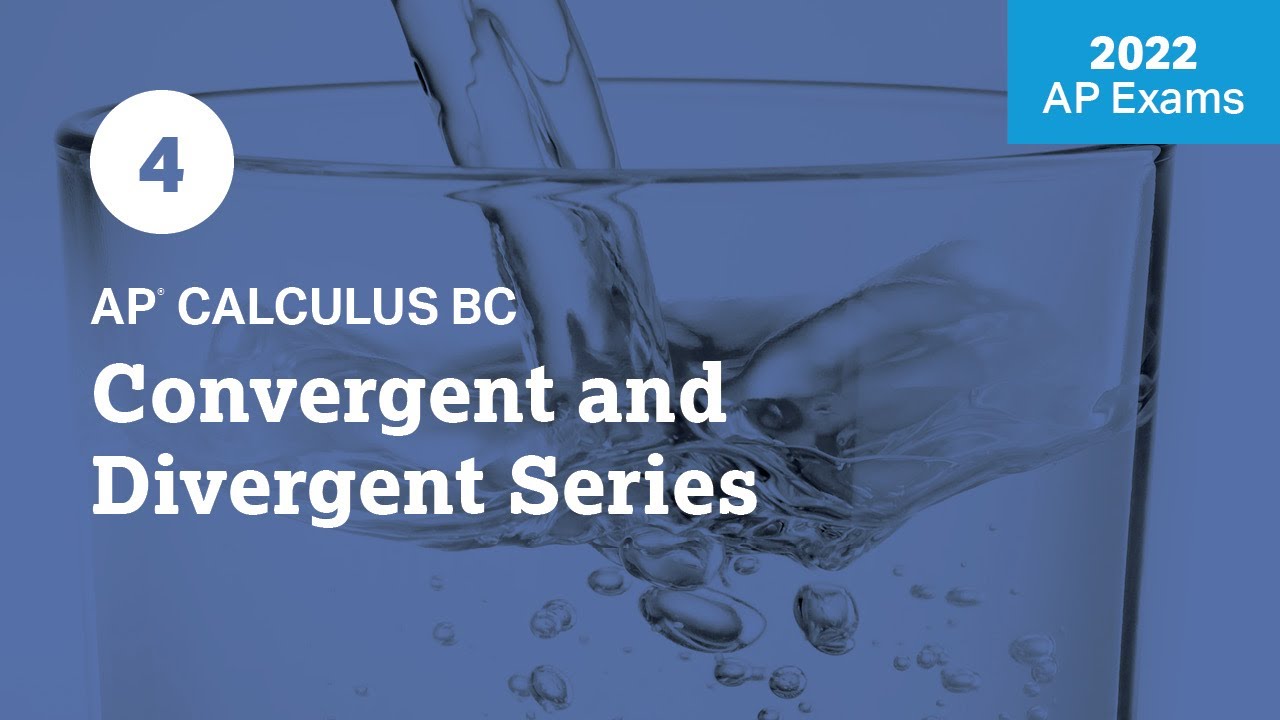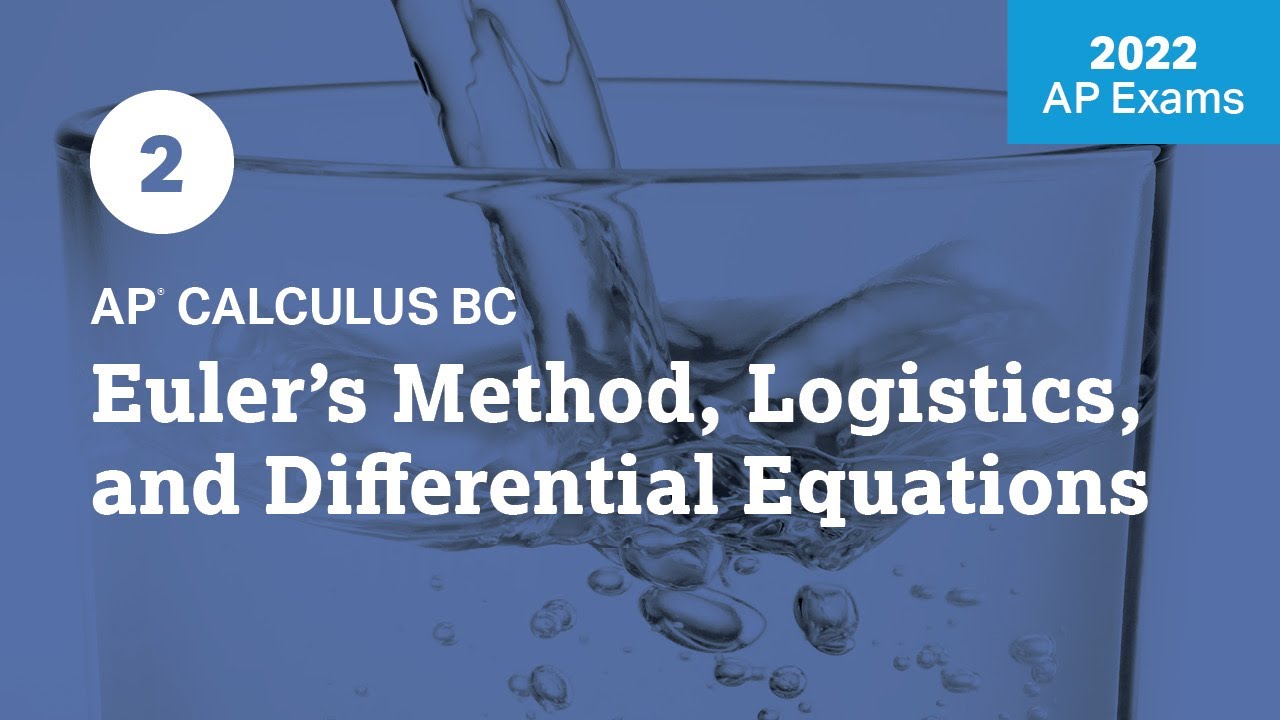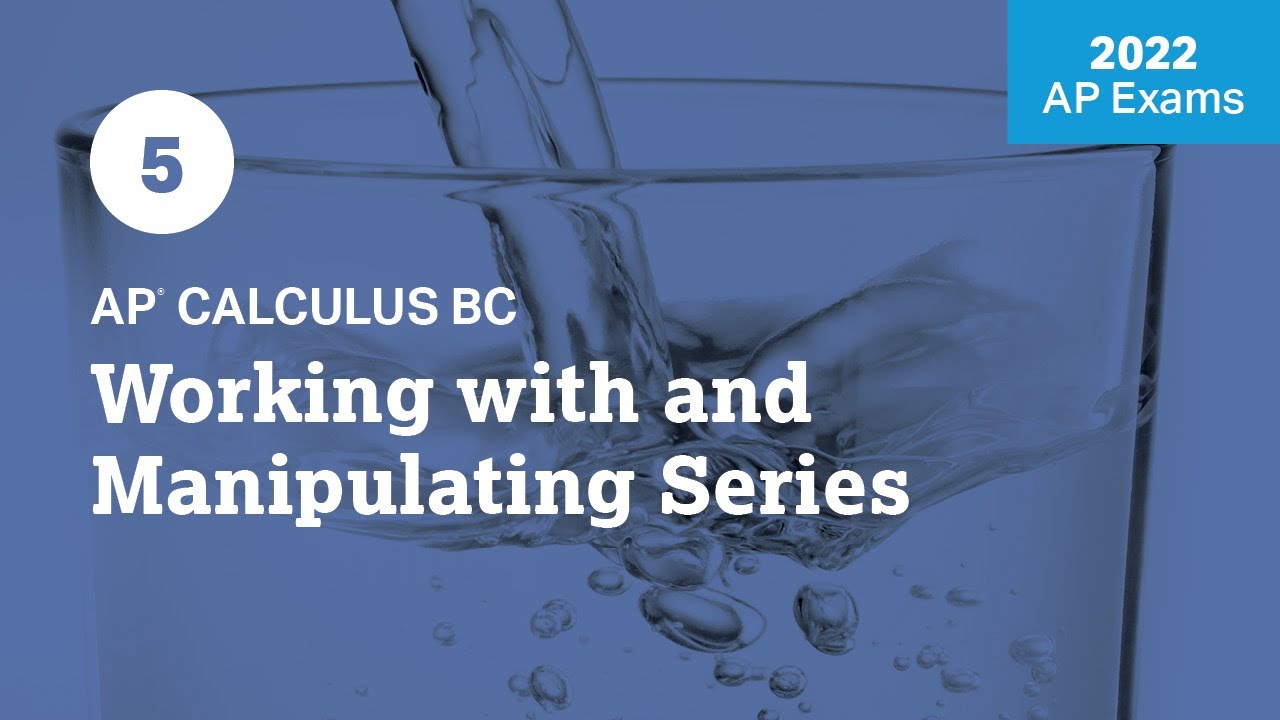1 | MCQ | Practice Sessions | AP Calculus BC
TLDRIn this AP Calculus BC practice session, Bryan Passwater and Tony Record discuss strategies for tackling common multiple-choice problems on the AP exam. They cover topics such as logistic differential equations, conditional convergence of alternating series, power series and their intervals of convergence, polar area calculations, and parametric equations with a focus on second derivatives. The session aims to enhance students' understanding and problem-solving skills in preparation for the exam.
Takeaways
- 📚 The video is a part of AP calculus BC daily practice sessions, hosted by Bryan Passwater and Tony Record.
- 🔢 The session focuses on strategies for tackling multiple choice problems commonly found on the AP calculus exam.
- 📝 A logistic differential equation with a carrying capacity of 50 is discussed, highlighting the standard form dy/dt = k*y*(1-y/L).
- 🎓 The importance of recognizing different forms of logistic differential equations is emphasized for accurate problem-solving.
- 🔄 Common mistakes in identifying logistic equations are discussed, including the alternate form dy/dt = a*y*(L-y).
- 🌟 The concept of conditional convergence in alternating series is introduced, with a focus on identifying series that exhibit this behavior.
- 📊 The session includes a detailed analysis of a power series, emphasizing the concept of interval of convergence.
- 🌐 The concept of polar areas is explored, with a problem involving finding the area between two polar curves.
- 🛠️ A parametric equation problem is solved, demonstrating the process of finding the second derivative with respect to time.
- 🚀 The video encourages practice and familiarity with various calculus concepts to improve performance on the AP exam.
- 📚 Additional resources, including past review videos and AP Classroom materials, are recommended for further study.
Q & A
What is the main topic of the video?
-The main topic of the video is AP calculus BC multiple choice problem strategies and solutions.
Who are the hosts of the video?
-The hosts of the video are Bryan Passwater and Tony Record.
What is the logistic differential equation mentioned in the video?
-The logistic differential equation mentioned is of the form dy/dt = k*y*(1 - y/L), where L represents the carrying capacity.
How can you identify the correct logistic differential equation with a carrying capacity of 50?
-To identify the correct equation, look for the term '1 - y/L' in the denominator and ensure that the value of L is 50.
What is the significance of the binomial expression '1 - y/L' in the logistic differential equation?
-The binomial expression '1 - y/L' represents the hampering part that turns exponential growth into logistic growth, incorporating the carrying capacity concept.
What is conditional convergence in the context of alternating series?
-Conditional convergence refers to the convergence of an alternating series where the series itself diverges, but the sequence of its partial sums converges.
How does the host determine which series are conditionally convergent?
-The host determines conditional convergence by considering the absolute values of the series expressions, removing the alternating component, and then checking for divergence using the n-th term test.
What is the power series discussed in the video?
-The power series discussed is a sub n * (x - 5)^n.
Given that the power series converges when x equals 9, what can be said about its convergence for other x values?
-The power series must converge for x values between 1 and 9, as the radius of convergence is at least 4, centered at x equals 5.
What is the polar function problem presented in the video?
-The polar function problem involves finding the area between the inner and outer loops of r(theta) = theta/2 * sin(theta) graphed between 0 and 2pi.
How does the video approach the polar function area problem?
-The approach involves identifying when the graph crosses the origin (r = 0), determining the order of the loops (inner loop first), and then using integration to find the area between the specified theta values.
What is the parametric problem solved in the video?
-The parametric problem involves finding the second derivative of y with respect to x, given x(t) = 3t^2 - 5 and y(t) = t^3 - 40 + 2, with t being positive.
How is the second derivative with respect to t found in the parametric problem?
-The second derivative with respect to t is found by taking the derivative of dy/dx (which is already in terms of t) and then dividing by the original derivative of x with respect to t (dx/dt).
Outlines
📚 Introduction to AP Calculus BC Practice
Bryan Passwater and Tony Record introduce the video, focusing on AP Calculus BC multiple-choice problems. They aim to share strategies for solving common problems on the AP exam. The video provides a PDF with questions for viewers to practice along. The first topic is the logistic differential equation, with a focus on understanding its common form and how to identify the carrying capacity from given choices.
🔢 Analyzing Conditional Convergence in Series
The discussion shifts to alternating series and conditional convergence. The speakers guide viewers through determining which series in the given options are conditionally convergent. They explain the process of analyzing the series by considering the summation of absolute values and using the n-th term test for divergence. The focus is on understanding the difference between absolutely convergent and conditionally convergent series.
📈 Power Series and Intervals of Convergence
Bryan and Tony tackle power series, focusing on the interval of convergence. They explain how to determine the convergence of a power series given a center point and a point where it converges. The explanation includes understanding the radius of convergence and how to apply this knowledge to find the correct interval of convergence for given x values.
🌐 Polar Functions and Area Calculation
The video moves on to polar functions, specifically calculating the area between two loops of a polar graph. The speakers discuss how to find when the graph crosses the origin and how to determine the order in which the loops are graphed. They explain how to calculate the area between the loops using integration and how to choose the correct expression for the area calculation.
🛤️ Parametric Equations and Second Derivatives
The final topic is about parametric equations and finding the second derivative. The speakers guide viewers through the process of taking the derivative of y with respect to x, and then taking the second derivative with respect to t. They emphasize the importance of including the correct denominator and simplifying the expression to arrive at the correct answer.
Mindmap
Keywords
💡Logistic Differential Equation
💡Carrying Capacity
💡Alternating Series
💡Conditional Convergence
💡Power Series
💡Interval of Convergence
💡Polar Coordinates
💡Polar Area
💡Parametric Equations
💡Second Derivative
Highlights
Bryan Passwater and Tony Record discuss strategies for AP Calculus BC multiple choice problems.
Logistic differential equation with a carrying capacity of 50 is examined.
The common form of the logistic differential equation is derived and explained.
A method to identify the correct form of logistic differential equations is presented.
Conditional convergence of alternating series is discussed with a focus on identifying the correct series.
The process of determining the convergence of a series by analyzing its absolute values is explained.
Power series and the concept of interval of convergence are explored with a theoretical approach.
The center and radius of a power series are identified from given convergence points.
Polar area problems are approached by determining the function's intersections with the origin.
The method for calculating the area between two polar curves is outlined.
Parametric equations and the calculation of the second derivative with respect to time are discussed.
The importance of not forgetting the denominator when computing the second derivative is emphasized.
The video provides strategies to maximize points and AP exam scores.
A PDF with the featured questions is available for download to practice with the video.
Two forms of logistic differential equations are compared and their differences are highlighted.
The n-th term test is used to determine the divergence of a series.
The alternating series test is applied to identify conditionally convergent series.
The concept of the radius of convergence for power series is introduced.
Transcripts
Browse More Related Video

Monday Night Calculus: Strategy for testing series

2022 Live Review 6 | AP Calculus BC | Working with Parametric Equations and Vectors

2022 Live Review 4 | AP Calculus BC | Convergent and Divergent Series

2022 Live Review 2 | AP Calculus BC | Euler's Method, Logistics, and Differential Equations

3 | FRQ (No Calculator) | Practice Sessions | AP Calculus BC

2022 Live Review 5 | AP Calculus BC | Working with and Manipulating Series
5.0 / 5 (0 votes)
Thanks for rating: